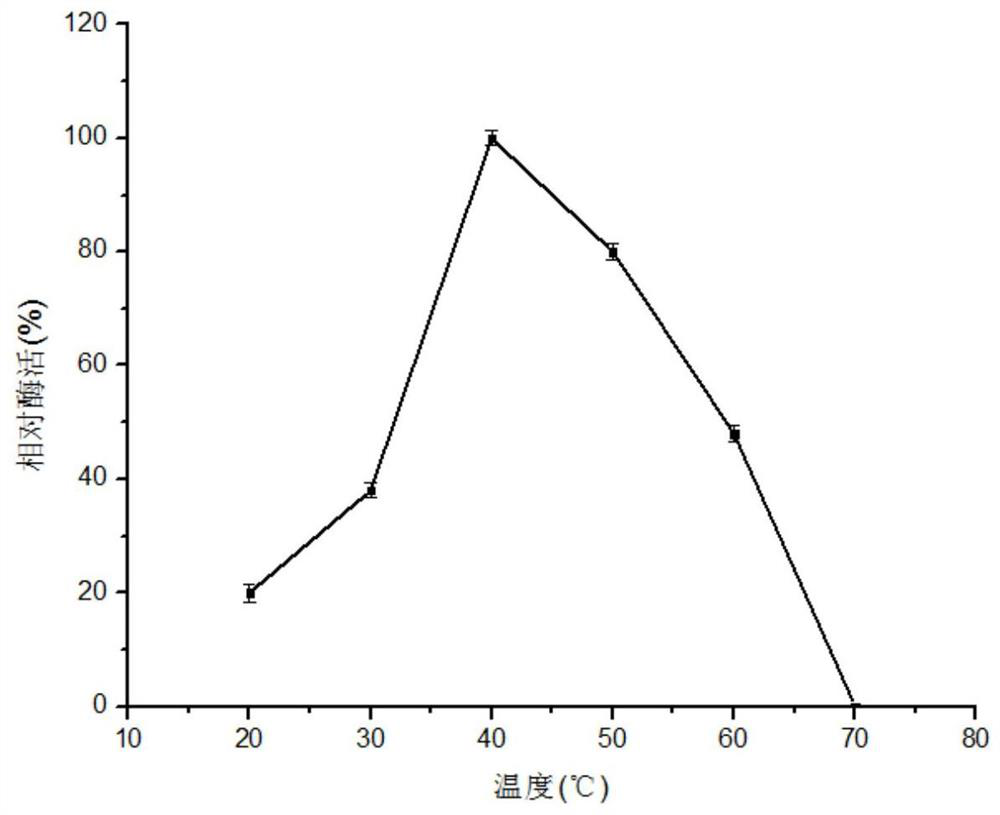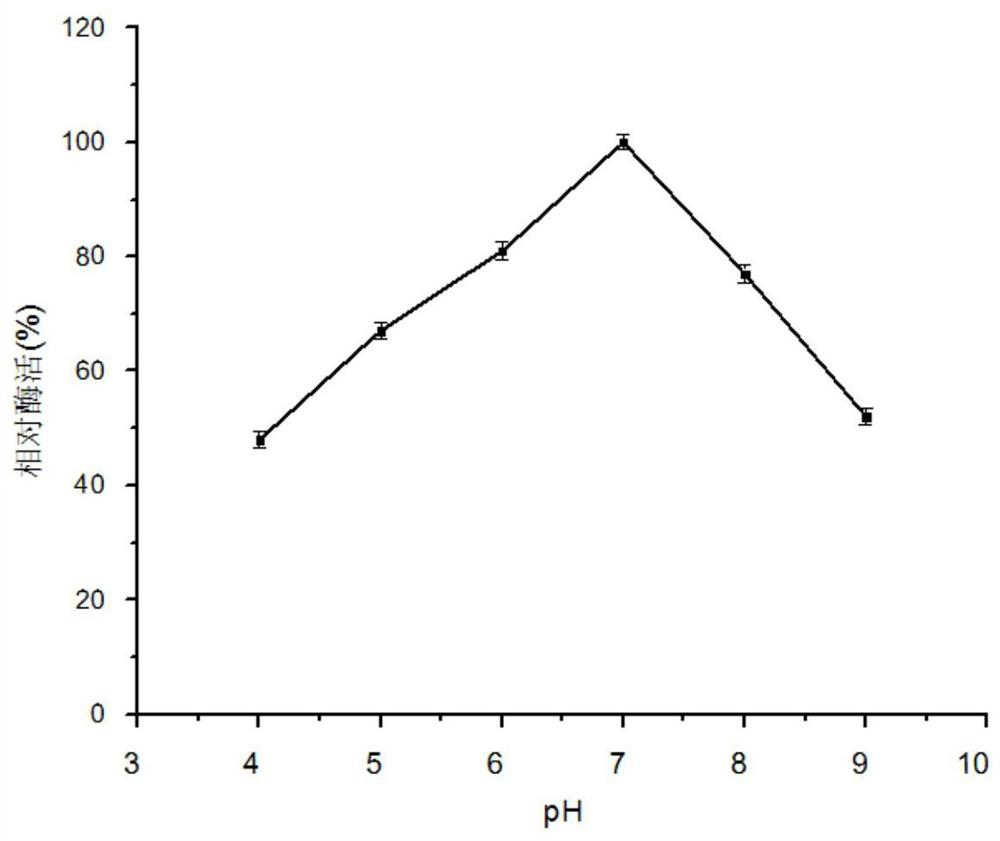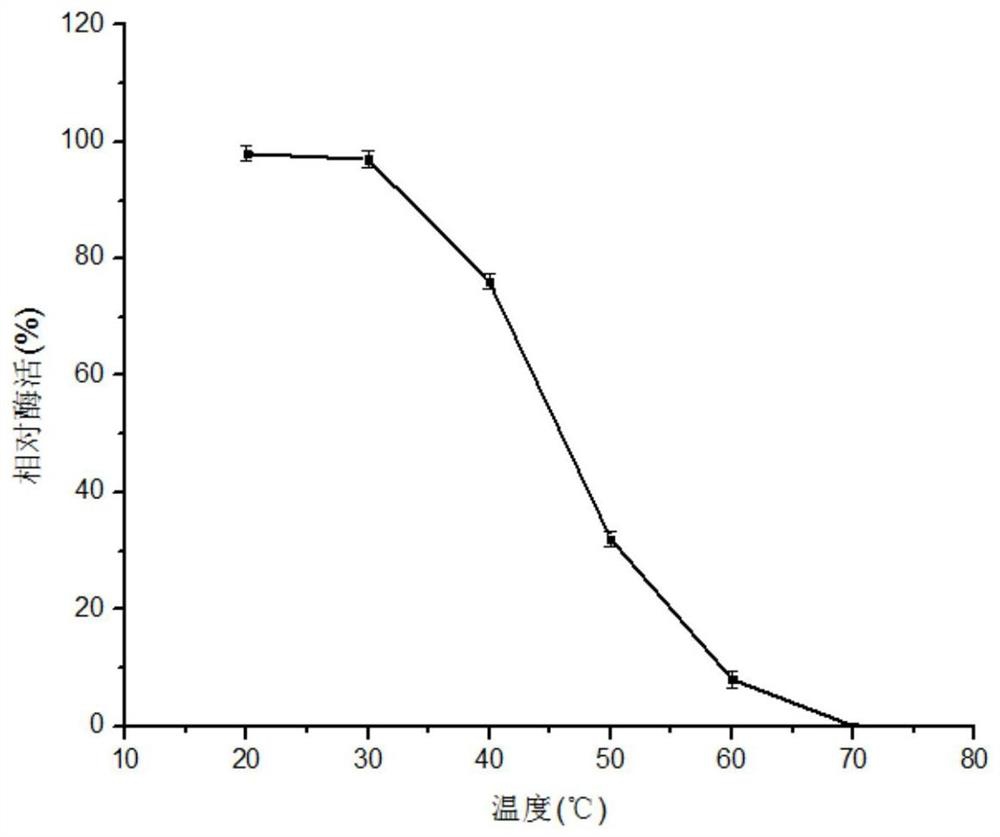A kind of agarase with uniform degradation product and application thereof
A degradation product, agarase technology, applied in the field of enzyme engineering, can solve problems such as complex components, and achieve the effect of good industrial application prospects
- Summary
- Abstract
- Description
- Claims
- Application Information
AI Technical Summary
Problems solved by technology
Method used
Image
Examples
Embodiment 1
[0036] Embodiment 1: the construction of genetically engineered bacteria
[0037] According to the complete genome sequence of Paenibacillus odorifer, specific primers (Table 1) were designed, and PCR amplification was performed using the Paenibacillus odorifer genome as a template and primers F1 and R1. After obtaining the target product, it was sent to Tianlin Biotechnology (Wuxi) Co., Ltd. for sequencing to obtain the agarase AgaP1 gene sequence whose nucleotide sequence is shown in SEQ ID NO.2 (amino acid sequence is shown in SEQ ID NO.1). The PCR product and plasmid vector pColdII were double digested with restriction endonucleases KpnI and XbaI, and ligated to obtain a recombinant plasmid. The recombinant plasmid was transformed into E.coli BL21(DE3) competent cells to obtain the recombinant strain E.coli BL21-pColdII-AgaP1.
[0038] Table 1 Primer Sequence
[0039]
Embodiment 2
[0040] Embodiment 2: expression and purification of agarase (AgaP1)
[0041] LB medium (g / L): sodium chloride 10, tryptone 10, yeast extract 5, pH 7.
[0042] Taking the original strain E.coli BL21(DE3) and the empty strain E.coli BL21(DE3) into the pClodII plasmid) as a control, the recombinant E. coli BL21-pColdII-AgaP1 was inoculated in the In LB liquid medium, culture at 37°C, 200rmp for 12h, then inoculate 500μL of the above seed solution into 50mL LB medium containing 50μL ampicillin, and culture at 37°C for 2.5h, until OD 600 to 0.5, lower the temperature of the shaker to 15°C and let it stand for 30 minutes. 20 μL of IPTG with a final concentration of 0.2 mM was added to each bottle as an inducer, and no inducer was used as a control group, and cultured at 15° C. and 200 rpm for 24 hours.
[0043] Collect the bacterial liquid, centrifuge at 4°C, 8000rmp for 10 minutes to obtain the bacterial cells, add 5 mL of phosphate buffer (0.02mol / L, pH 7.0) to resuspend the bac...
Embodiment 3
[0044] Embodiment 3: the enzyme activity assay of agarase (AgaP1)
[0045]In disodium hydrogen phosphate-potassium dihydrogen phosphate buffer (pH 7), with agarose as substrate, in the range of 20-60 ° C, every 10 ° C, the activity of agarase AgaP1, it can be seen that the activity of agarase AgaP1 The optimum temperature is 40°C (see figure 1 ). Under the optimum reaction temperature of 40°C, within the range of pH 4.0-9.0, measure the enzyme activity at intervals of 1 unit, and determine that the optimal reaction pH is 7.0 (see figure 2 ).
[0046] In disodium hydrogen phosphate-potassium dihydrogen phosphate buffer solution (pH 7.0), under the condition of 40 DEG C, the enzyme activity and The specific enzyme activity of the purified agarase AgaP1, wherein the enzyme activities of AgaP1 in the crude enzyme solution are 5716.68U / L and 4116.96U / L respectively, and the specific enzyme activities of the purified agarase AgaP1 are 694.61U / mg and 490.11U / mg.
[0047] Temper...
PUM
 Login to View More
Login to View More Abstract
Description
Claims
Application Information
 Login to View More
Login to View More - R&D
- Intellectual Property
- Life Sciences
- Materials
- Tech Scout
- Unparalleled Data Quality
- Higher Quality Content
- 60% Fewer Hallucinations
Browse by: Latest US Patents, China's latest patents, Technical Efficacy Thesaurus, Application Domain, Technology Topic, Popular Technical Reports.
© 2025 PatSnap. All rights reserved.Legal|Privacy policy|Modern Slavery Act Transparency Statement|Sitemap|About US| Contact US: help@patsnap.com



